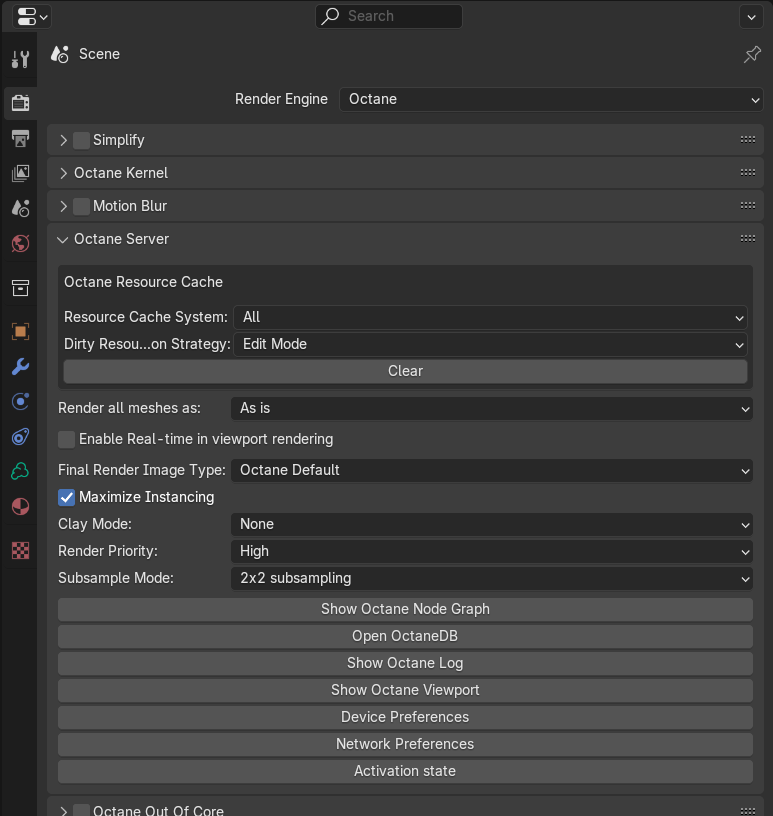Octane Server
Located in Render Properties, the Octane Server rollout provide general controls on handling the render resources (Figure 1).

Figure 1: Octane Server Parameters
Parameters
- Resource Cache System - Cache the textures and geometries in RAM so to make the viewport rendering initialization faster.
- Dirty Resource Detection Strategy - The strategy used in detecting whether a mesh is dirty so a reloading is required. A mesh will be marked as dirty and reloaded once the edit mode is on.
- Clear - Clear the Resource Cache.
- Render all meshes as - Overrides the Object Type for all meshes during rendering.
- Enable Real-time in viewport rendering - A faster viewport rendering mode.
- Final Render Image Type - Render(F12) as LDR or HDR image if applicable.
- Maximize Instancing - If enabled, Octane will try to collect and group instances into scatter as much as possible.
- Clay Mode - Renders the image in either a Gray clay or color clay mode.
- Render Priority - Render priority that should be used for rendering.
- Subsample Mode - Controls rendering speed by using a larger or smaller set of sampling.
- Show Octane Node Graph - Show Octane NodeGraph (VIEW Mode Only. Please DO NOT ADD or DELETE nodes.).
- Open OctaneDB - Shows the Local and Live DB.
- Show Octane Log - Octane Log for system tracking.
- Show Octane Viewport - Show Octane Viewport (Suggest VIEW Mode Only. Camera navigation in the viewport would not synchronize to Blender viewport.).
- Device Preferences - Show the GPU resources and settings.
- Network Preferences - Opens the panel to setup network rendering.
- Activation state - Allows you to sign in or sign out an Octane license.